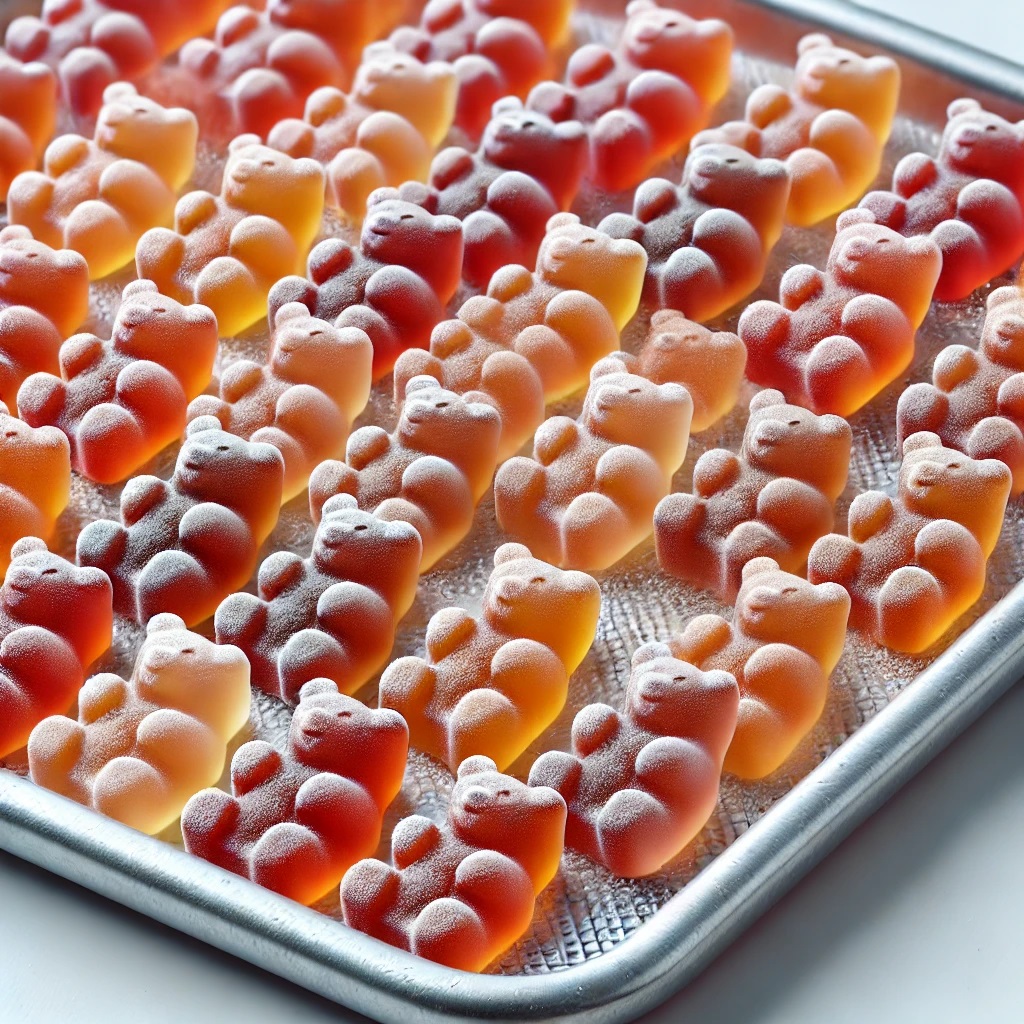Freeze-drying, also known as lyophilization, is a fascinating process that preserves the taste, texture, and nutritional value of food by removing moisture in a way that retains the food’s structure. While it’s widely used in industries to preserve everything from coffee to astronaut meals, it’s also an exciting technique that you can try at home—especially with candy.
This guide will walk you through everything you need to know about freeze-drying candy, including detailed methods you can use at home, the best types of candy to freeze-dry, how the process changes the texture of your favorite sweets, and some creative applications for this technique. Whether you’re a home cook looking for a fun kitchen experiment, a candy lover seeking a new twist on old favorites, or a food blogger eager to try something new, this guide is for you.
The Science of Sweetness: Understanding Freeze-Drying
Before diving into the how-to, let’s take a moment to understand the science behind freeze-drying. This process removes moisture from food through sublimation, turning frozen water directly into vapor without passing through a liquid phase.
In the case of candy, the process involves:
- Freezing: The candy is first frozen to a very low temperature, usually around -50°C (-58°F). This solidifies the water content within the candy.
- Vacuuming: The frozen candy is then placed in a vacuum chamber. The pressure in the chamber is lowered, causing the frozen water in the candy to sublimate—turning directly into water vapor and leaving the candy without moisture.
- Drying: After sublimation, the candy is left with a dry, crunchy texture. The drying process may include a secondary drying phase to remove any remaining bound water molecules, ensuring the candy is fully preserved.
DIY Freeze-Drying: Bringing Candy Back to Life at Home

Freeze-drying at home can be done in several ways, ranging from using specialized equipment to more DIY approaches. Here’s a detailed look at the different methods:
1. The Home Freeze Dryer: Your New Best Friend in Candy Experimentation
The most straightforward way to freeze dry candy at home is by using a home freeze dryer. These machines are designed to handle small batches and make the process relatively simple.
Steps:
- Pre-freeze the Candy: Arrange your candy on the trays provided with the freeze dryer. Pre-freeze the candy in your regular freezer for a few hours to kickstart the process.
- Load the Freeze Dryer: Once pre-frozen, load the trays into the freeze dryer.
- Start the Freeze-Drying Process: Set the machine to the appropriate settings. The process can take anywhere from 24 to 48 hours, depending on the type and amount of candy.
- Store the Candy: Once the cycle is complete, remove the candy and store it in airtight containers to prevent moisture from re-entering.
2. The Dry Ice Method: A Cool Way to Freeze Dry Without a Machine
If you don’t have a freeze dryer, the dry ice method is a DIY alternative that can produce somewhat similar results.
Steps:
- Prepare a Cooler: Find a large cooler and line it with dry ice.
- Arrange the Candy: Place your candy on a tray and position it on top of the dry ice.
- Cover with More Dry Ice: Layer more dry ice on top of the candy tray, ensuring that the candy is surrounded.
- Seal and Wait: Close the cooler tightly and allow it to sit for about 24 hours. The dry ice will sublimate, pulling moisture out of the candy as it turns into carbon dioxide gas.
- Check and Store: After 24 hours, check the candy. If fully freeze-dried, store it in airtight containers.
3. Vacuum Chamber and Freezer Combo: A Science Experiment in Your Kitchen
This method involves using a vacuum chamber in combination with your home freezer. While it’s a bit more complex and may not be as effective as using a dedicated freeze dryer, it’s a viable option for experimentation.
Steps:
- Freeze the Candy: As with other methods, start by freezing the candy.
- Vacuum Chamber Setup: Place the frozen candy in a vacuum chamber. Use a vacuum pump to lower the pressure within the chamber.
- Maintain Low Temperature: Keep the chamber in a freezer or use a cooling mechanism to maintain a very low temperature.
- Drying Process: Leave the candy in the vacuum chamber for several days, periodically checking on the progress. The vacuum will help the frozen water in the candy to sublimate.
- Store Properly: Once fully dried, store the candy in airtight containers.
Candy Choice Matters: What Works Best for Freeze-Drying?

Not all candies are created equal when it comes to freeze-drying. The process tends to work better on certain types of candy, particularly those with a high water content or those that can benefit from a crunchy texture.
Sweet Success: Candies That Freeze Dry Like a Dream:
- Gummy Bears: These become crunchy and light, creating a fun twist on the chewy texture.
- Marshmallows: Already light and fluffy, freeze-dried marshmallows become even airier and can be crushed into a powder for use in baking.
- Skittles: Freeze-drying causes Skittles to puff up, resulting in a crispy shell with an intensified flavor.
- Fruits with Sugar Coating: Candied fruits or fruit-flavored candies with a high water content dry beautifully, turning into crispy, flavorful snacks.
- Chewy Taffy: Taffy transforms into a light, crisp version of itself, almost like a candy meringue.
Candies That Won’t Win the Freeze-Drying Challenge:
- Chocolate: Chocolate doesn’t freeze-dry well on its own due to its low water content and high fat content, leading to poor texture and flavor changes.
- Hard Candies: These already have low water content, so freeze-drying doesn’t significantly alter their texture or taste.
From Chewy to Crispy: The Magical Texture Transformation of Freeze-Dried Candy

One of the most exciting aspects of freeze-drying candy is how dramatically it changes the texture. This transformation occurs because the removal of water leaves behind the candy’s structural elements, resulting in a crispy, airy texture that’s often described as melt-in-your-mouth.
- From Chewy to Crispy: Candies like gummies and taffy lose their chewiness, becoming crunchy or brittle.
- Enhanced Flavor: Without moisture to dilute it, the flavor of freeze-dried candy can become more concentrated and intense.
- New Applications: Freeze-dried candy can be ground into powders for baking, used as a crunchy topping, or simply enjoyed as a novel snack.
Sweet Innovations: Creative Uses for Freeze-Dried Candy
Once you’ve mastered freeze-drying candy, there are countless ways to use it creatively. Here are a few ideas to inspire you:
1. Elevate Your Baking Game
Use crushed freeze-dried candy as a topping for cakes, cupcakes, and cookies. It adds a unique texture and burst of flavor that can transform a simple dessert into something extraordinary.
2. Cocktail and Drink Garnishes
Freeze-dried candy can make for colorful and flavorful garnishes for cocktails, milkshakes, or hot cocoa. For example, freeze-dried marshmallows are perfect for hot chocolate, while freeze-dried Skittles can add a pop of color and flavor to fruity cocktails.
3. DIY Snack Mixes
Create your own custom trail mix or snack blend by mixing freeze-dried candies with nuts, seeds, and dried fruits. The combination of textures and flavors can make for an exciting snack that’s both sweet and satisfying.
4. Sweet Gifts for Loved Ones
Package freeze-dried candy in decorative jars or bags for a homemade gift. The unique texture and flavor of these candies make them an interesting and thoughtful present for friends and family.
Freeze-Drying Beyond Candy: Industry Examples and Inspirations
While freeze-drying is a fun kitchen experiment, it’s also a serious business in the food industry. Here are a few examples of how this technology is used commercially:
- Astronaut Food: NASA has used freeze-dried food for decades to provide astronauts with lightweight, long-lasting meals in space. Freeze-dried ice cream is a popular novelty item that stems from this application.
- High-End Restaurants: Some gourmet chefs use freeze-drying to create innovative dishes. For example, freeze-dried fruits and herbs can add unique flavors and textures to fine dining plates.
- Instant Coffee: One of the most common freeze-dried products, instant coffee, uses this technology to preserve the flavor and aroma of brewed coffee, making it easy to rehydrate with hot water.
- Pet Food: Many high-end pet foods now use freeze-dried meats and vegetables to provide pets with nutrient-rich, preservative-free diets.
Conclusion
Freeze-drying candy at home is a fun and rewarding experiment that transforms your favorite sweets into something entirely new. With the right equipment or a little DIY ingenuity, you can create crispy, flavorful candy that offers a novel texture and taste experience. Whether you’re looking to elevate your desserts, create unique snacks, or simply explore a new cooking technique, freeze-drying opens up a world of possibilities.
FAQ:
Can I freeze dry candy without a machine?
Yes, while a home freeze dryer is the most effective method, you can also use dry ice or a vacuum chamber with a freezer. These methods are less consistent, but still produce interesting results.
How long does freeze-dried candy last?
Properly stored in airtight containers, freeze-dried candy can last for months or even years. The key is to keep moisture out to prevent spoilage.
Does freeze-drying candy change its flavor?
Freeze-drying often intensifies the flavor of candy because the removal of water concentrates the existing flavors.
Can I freeze dry any candy?
Not all candies are ideal for freeze-drying. Candies with higher water content or those that benefit from a crunchy texture, like gummies and marshmallows, work best.


Leave a Reply